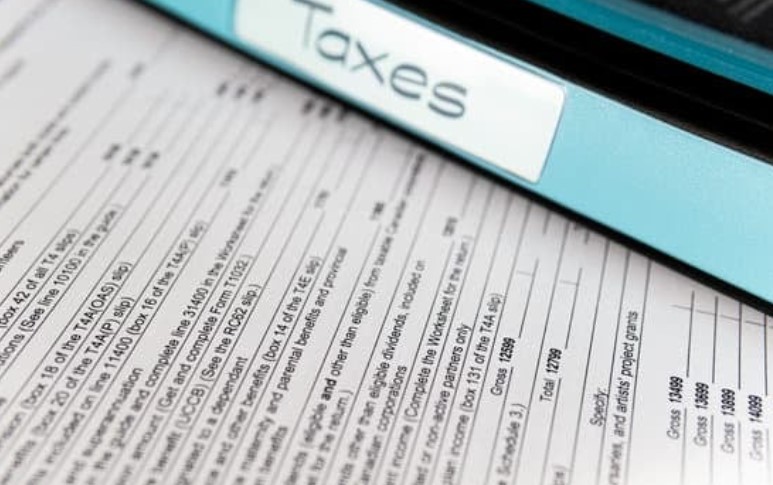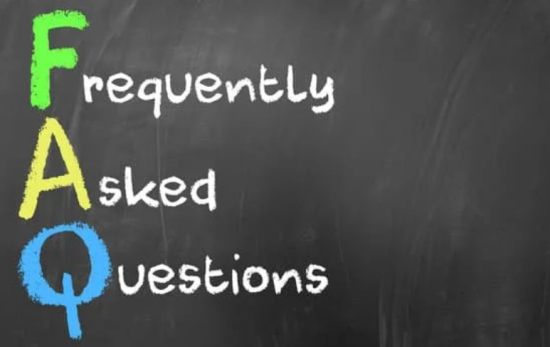Are you a Canadian resident who owns foreign investment property? If so, then Form T1135 is something you need to know about! The Foreign Income Verification Statement (Form T1135) is an essential document required by the Canada Revenue Agency (CRA) to identify specified foreign property. Whether you’re an individual, corporation, trust, or partnership, understanding what this form entails and how to file it correctly is crucial. In this blog post, we’ll delve into all the important details surrounding Form T1135 in Canada. So let’s get started and unravel the mystery behind this tax obligation!
What is Form T1135 in Canada?

Form T1135, also known as the Foreign Income Verification Statement, serves a vital purpose in Canada. It acts as a tool for identifying foreign investment property or what the CRA refers to as “specified foreign property.” Whether you’re an individual, corporation, trust, or partnership residing in Canada, this form is mandatory if you owned specified foreign property at any point during the year.
The main objective of Form T1135 is to provide transparency and ensure that Canadian residents accurately report their foreign investments. By filing this form, taxpayers are helping the CRA keep track of overseas assets and income. This information allows them to enforce tax laws effectively and prevent tax evasion.
It’s important to note that “specified foreign property” includes various types of assets such as real estate holdings abroad, shares in international companies, offshore bank accounts, intellectual property rights held outside Canada, and more. The specific details regarding what constitutes specified foreign property can be found on the form itself.
By requiring individuals and entities to disclose their specified foreign property holdings through Form T1135, the CRA aims to promote fairness in taxation while ensuring compliance with Canadian tax laws. Understanding your obligations under this form will help you fulfill your reporting requirements accurately and avoid potential penalties or issues with the CRA down the line.
Who needs to file Form T1135 in Canada?
All Canadian resident taxpayers, regardless of whether they are individuals, trusts, corporations, or partnerships, may be required to file Form T1135 if they meet certain criteria. Specifically, if at any point during the year, they owned specified foreign property (SFP) with a total cost amount exceeding $100,000 (Canadian), then filing this form is obligatory.
It’s important to note that even if some or all of the SFP was sold before the end of the year, taxpayers must still file Form T1135 if they meet the ownership and cost threshold. This means that any individual or entity who meets these requirements cannot escape their reporting obligations by simply disposing of their specified foreign property.
However, there are a few exceptions to consider. For example, properties used exclusively in carrying on an active business are not subject to reporting on Form T1135. Additionally, certain specified foreign properties such as shares in mutual funds and debt owed by non-residents do not need to be reported unless specific conditions apply.
It is crucial for Canadian residents who own specified foreign property exceeding $100,000 in value to ensure compliance with CRA regulations by filing Form T1135 within the prescribed timelines.
Where to Send T1135?

When it comes to submitting Form T1135 in Canada, it’s important to know where and how to send it. The Canada Revenue Agency (CRA) has made the process relatively straightforward.
One option is to file your T1135 online through EFILE (NETFILE). This convenient method is available for most taxpayers, including individuals, corporations, and partnerships. However, please note that trusts cannot use this online filing option.
If you prefer a more traditional approach, you can download the form from the CRA website and complete it manually. Once you’ve filled out all the necessary information, you can then send the completed form to the respective CRA office by mail.
If you find yourself needing more time to gather all the required information or complete your T1135 accurately, there is an option for an extension. You can attach a schedule based on the table formats provided in form T1135 when requesting an extension. The CRA may grant extensions of up to three years for reporting specified foreign property.
So, whether you choose to file electronically or manually submit your Form T1135 by mail, make sure to do so before the issued deadlines set by the CRA. Remember that accuracy and timeliness are key when dealing with tax forms like these!
When is Form T1135 Due in Canada?
When it comes to filing Form T1135 in Canada, timing is everything. But when exactly is the due date? Well, according to the Canada Revenue Agency (CRA), Form T1135 must be filed on or before the due date of your income tax return. This means that you need to make sure you have all your ducks in a row and submit this form along with your tax return.
But what if you’re part of a partnership? Don’t worry, the same rule applies. The due date for partnerships is based on the partnership information return. So even if you’re not required to file an income tax return, you still need to file Form T1135 by the specified deadline.
It’s important not to overlook this requirement because failing to file can result in penalties. And let me tell you, these penalties are no joke! They start at a minimum of $100 and can increase up to $2,500 for each tax year. In addition, there may be additional gross negligence penalties or penalties for making false statements.
So mark those calendars and make sure you meet the deadline for filing Form T1135. It’s better safe than sorry when it comes to staying on top of your financial obligations!
Penalties for Not Filing a T1135

Failing to file Form T1135 can result in serious penalties. The penalty starts at a minimum of $100 and increases by $25 per day for up to 100 days, with a maximum penalty of $2,500 per tax year. However, that’s not all. The Canada Revenue Agency (CRA) may also impose gross negligence penalties on top of the automatic penalty.
Gross negligence penalties are much harsher and consist of $500 per month for up to 24 months, totalling $12,000. If the CRA contacts you with a demand to file a return and you still fail to do so, the penalties increase even further. At this point, the penalties jump to $1,000 per month for up to 24 months or a total of $24,000.
It’s important to note that making false statements or failing to report the required information on your T1135 may lead to additional penalties. These are only applied if there is evidence of gross negligence on the part of the taxpayer. The penalty amount will be either 5% of the cost of specified foreign property or $24,000 – whichever is higher.
Remember that personal property like vacation homes is not included in calculating the value threshold for Form T1135; it only applies to income-earning property. There are certain properties called specified foreign properties that must be reported regardless of meeting the $100,000 threshold. This includes things like foreign bank accounts, shares, intellectual property and interests in partnerships or joint ventures holding specified foreign properties.
Lastly but importantly when filing Form T1135 remember that all values should be in Canadian dollars after converting from any other currency used during that year while keeping currency fluctuations in mind.
Conclusion
Form T1135 is an important document that individuals, corporations, trusts, and partnerships in Canada must file if they own specified foreign property. It helps the CRA identify foreign investment property and ensure compliance with tax laws.
Filing Form T1135 is mandatory for taxpayers who own specified foreign property with a total cost amount exceeding $100,000 at any point during the year. Failure to comply with this requirement can result in penalties ranging from automatic fines to gross negligence penalties.
To meet your filing obligations, you can submit your T1135 form online through EFILE (NETFILE) or manually by downloading and completing the form before sending it to the CRA office. Remember to file on time before the due date of your income tax return or partnership information return.
It’s crucial to accurately report and calculate the value of specified foreign properties using Canadian dollars. Keep track of currency fluctuations throughout the year when converting from foreign currencies.
Complying with Form T1135 requirements ensures transparency in reporting offshore investments and helps maintain trust between taxpayers and the CRA. If you have any doubts about whether you need to fill out this form or how to do so correctly, consult a tax professional who specializes in international taxation matters.
Remember that staying informed about your tax obligations is essential for maintaining financial well-being. Stay up-to-date with changes in regulations and seek expert advice when needed.
FAQs on What is Form T1135 in Canada?
1. Do I need to file T1135 every year?
Yes. Even if you sold some or all of the property before the end of the year, as long as you met the $100,000 reporting requirement threshold at any point in the year, you must disclose on Form T1135 all specified foreign properties owned throughout the year.
2. How much foreign property is tax free in Canada?
Since 1997, Canadians have been required to register foreign property worth more than $100,000. You can submit a Voluntary Disclosure if you previously missed turning in this form to avoid paying expensive fines. Include T1135 forms from prior tax years with your disclosure when you do this.
3. Why does the CRA want to know if I own foreign property?
Be mindful of your reporting requirements if you hold overseas property. Form T1135, Foreign Income Verification Statement, must be submitted on time. The thorough reporting requirements on Form T1135 aid in the fight against aggressive tax avoidance and worldwide tax evasion.
4. Do Canadians pay tax on foreign property?
Being informed of your reporting requirements is important if you own property outside of Canada. The “infamous” Foreign Income Verification Statement (Form T1135) is required to be filed by the Income Tax Act’s stringent reporting requirements on the ownership of specific foreign properties.











